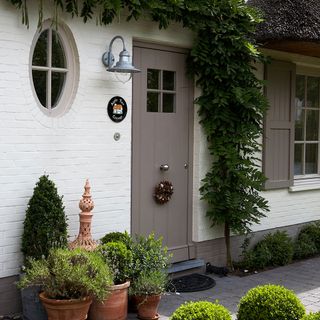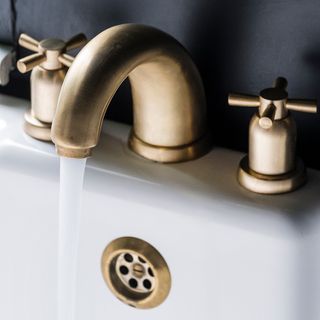How to spot the signs of a leak – and what to do about it if you have one
Don’t delay if you recognise any of these signs, it’s time to call a plumber
Water leaks can be hard to spot, but if left undiagnosed, these pesky problems can quickly spiral into costly issues. It’s not just the price of fixing the route of the problem, but the resulting water damage to your home that can really soar.
Maintain your home the easy way with our DIY & Decorating advice
Izzy Schulman, Director at Plumbers4u tells us how to spot the signs of a leak and what to do if you spot one.
1. Damp patches and cracked walls

Alarm bells should start ringing if wet areas or damp patches appear on walls or ceilings. If you spot any new damp patches, it’s important to get them seen to straight away.
If the damp is coming from up from the floor, it’s time to take immediate action. This is cause for serious concern, as any prolonged saturation can weaken the foundations of your home over time.
If the leak is coming through from the roof, it might be a case of compromised flashing or a damaged roof vent. Also locate your water tank, which may be in the loft, to check the leaks aren’t originating from there.
2. Mould, mildew and odd smells

If you notice a musky smell, patches of black mould or discolouration on the walls, this may be a marker of a small to moderate leak in your home.
Mould thrives in humid temperatures so if pipes are leaking in a warm area of the house, mould can appear as quickly as 24-48 hours. It’s important to keep on top of this - have it examined and cleaned, as dangerous spores that can affect health can form in just three days if left untouched.
If the wall isn’t overly saturated, you can tackle the mould before harmful spores form. Start by cleaning with mould and mildew cleaner, leaving the solution on the problem area for 5 minutes before wiping away for best results. Be aware a cleaner like this may remove some painted surefaces.
Related: How to get rid of damp, condensation and mould
If you spot mould, it’s likely the leak is inside the wall - so it’s time to call a plumber to find the source of the problem as soon as possible. They will have the experience in sourcing such leaks and best equipped to deal with it as it may require specialist tech to accurately diagnose the problem.
3. A hike in water bills and low water pressure

If a high water bill comes out of nowhere, even if your consumption is constant, or if the bill is frequently over your estimations, it might be cause for concern.
If there aren’t any of the signs of a leak in your home, it could be there’s a larger leak on the external pipes that connect your home to the mains supply. A clear signal of this is if there’s an obvious drop in water pressure or no water coming out of the taps at all.
It’s worth checking in with neighbours first or reach out on a local Facebook group to see if their supply has changed as it’s possible that the street’s supply has been affected.
If it is just your property that has the problem, look around your front and back gardens for leaks, damp patches and overgrown areas of grass near any drains, which can indicate problems with external pipes.
4. Unusual sounds around the house

Those odd, background sounds that we begin to ignore over time, like running water, gurgling or bubbling from near a sink, toilet or bathroom could actually be a sign of a possible leak.
Related: How to change a tap and give your kitchen a fresh new look
One way to put your mind at ease if you’re becoming concerned, is to check your water meter. If it’s registering water usage or ticking when there isn’t any water running, it’s time to get in touch with a plumber.
Get the Ideal Home Newsletter
Sign up to our newsletter for style and decor inspiration, house makeovers, project advice and more.
-
 7 things you need to know before making pallet furniture to save you time and money
7 things you need to know before making pallet furniture to save you time and moneyWhy buy off-the-shelf when you can make your own bespoke garden furniture?
By Lauren Bradbury
-
 The touchless tech that will transform your daily routines - how to control your home, hands-free
The touchless tech that will transform your daily routines - how to control your home, hands-freeThe digital world is increasingly going hands-free - discover how you can bring touchless tech into your home
By Ginevra Benedetti
-
 Aldi's stunning £50 mosaic water feature is the star of its new garden range inspired by the Italian Riviera
Aldi's stunning £50 mosaic water feature is the star of its new garden range inspired by the Italian RivieraIt's the Mediterranean summer we've been dreaming of
By Jullia Joson